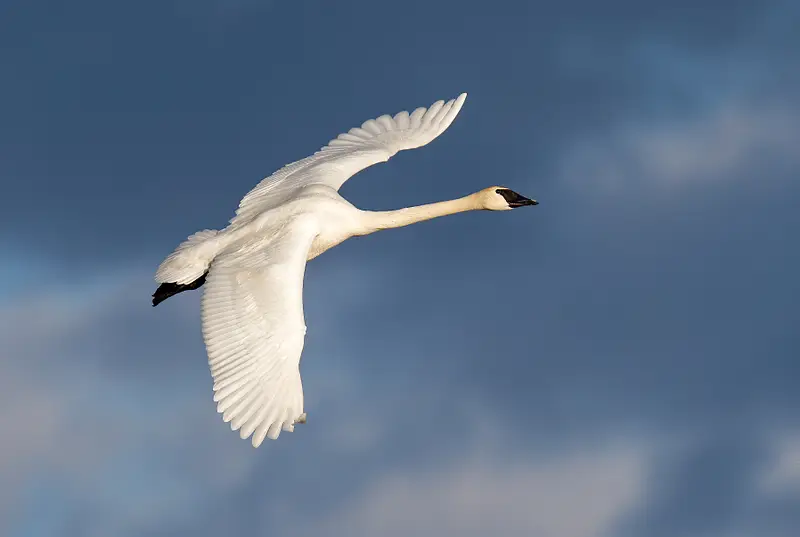About Tundra Swan
Tundra Swans (Cygnus columbianus), often called “whistling swans” due to the distinctive whistling sound their wings make in flight, were named by none other than Lewis and Clark during their expedition across the Louisiana Purchase. These majestic birds breed in the remote Arctic regions of North America and exhibit remarkable philopatry, returning to the same place to nest every year. Their migratory patterns and breeding sites can be observed on the 50 Ducks duck map, providing valuable insights into their life cycle and conservation needs.

Identification
Tundra Swans are large, white birds with long necks and black bills, often featuring a small yellow spot at the base of the bill. Their long, graceful necks and elegant flight make them easily recognizable among other waterfowl.
Breeding
Tundra Swans breed in the remote Arctic regions, constructing nests on the ground near water. They display strong philopatry, returning to the same nesting sites each year. The female typically lays a clutch of 3-5 eggs and is responsible for incubation, while both parents care for the cygnets after they hatch.
Behavior
During the breeding season, Tundra Swans inhabit the Arctic tundra, favoring wetlands, shallow lakes, and coastal plains for nesting. In the winter, they migrate to coastal bays, estuaries, and large inland lakes in regions such as the Chesapeake Bay. These wintering areas provide the abundant aquatic vegetation and invertebrates that are crucial to their diet.
Habitat
During the breeding season, Tundra Swans inhabit the Arctic tundra, favoring wetlands, shallow lakes, and coastal plains for nesting. In the winter, they migrate to coastal bays, estuaries, and large inland lakes in regions such as the Chesapeake Bay.
Migration
Tundra Swans are extremely long-range migrants, often traveling over 10,000 miles annually between their wintering and breeding grounds. They breed in the Arctic tundra and migrate to wintering areas such as the Chesapeake Bay, where large populations gather during the colder months. Their migration routes can be tracked on the 50 Ducks duck map, showcasing their impressive journeys.
No Data Found
How many days tracked
Lorem ipsum dolor sit amet, consectetur adipiscing elit. Ut elit tellus, luctus nec ullamcorper mattis, pulvinar dapibus leo.
Where are they now?
Lorem ipsum dolor sit amet, consectetur adipiscing elit. Ut elit tellus, luctus nec ullamcorper mattis, pulvinar dapibus leo.
No Data Found
No Data Found
Total Number of Data Points for Tundra Swan
Lorem ipsum dolor sit amet, consectetur adipiscing elit. Ut elit tellus, luctus nec ullamcorper mattis, pulvinar dapibus leo.
Start and End Date Tracking of Tundra Swan
Lorem ipsum dolor sit amet, consectetur adipiscing elit. Ut elit tellus, luctus nec ullamcorper mattis, pulvinar dapibus leo.
No Data Found
Overall Data from the Center
This is historical data from various sources. This data is available in its full form on our Duck Map in an easily visualizable format.
